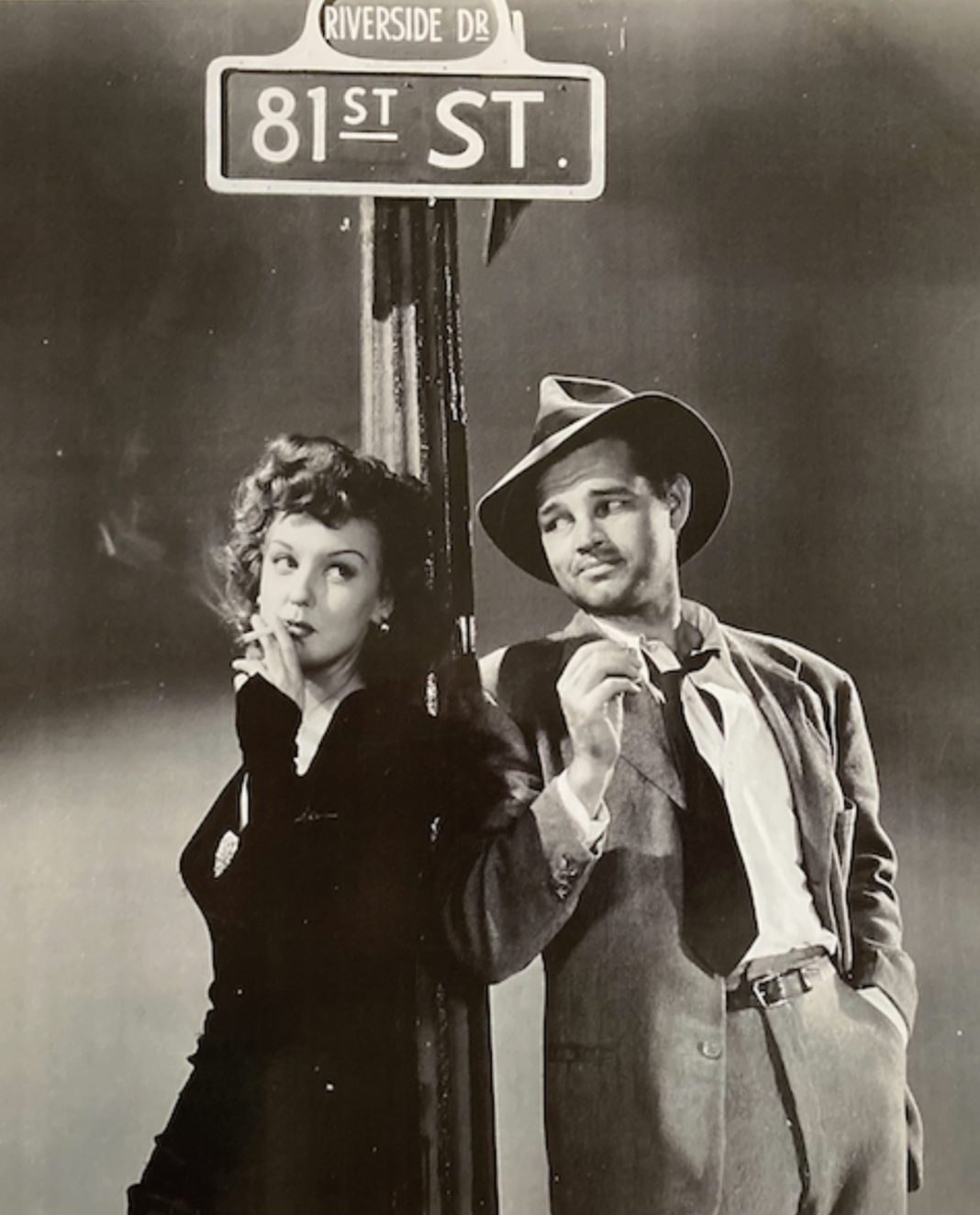For eight years now, I’ve been writing, co-producing and co-hosting a television show called Film Noir Theatre. From the beginning, it’s aired on RSU TV, Channel 35 – northeastern Oklahoma’s public-television station, headquartered on the Rogers State University campus in Claremore. For the first two seasons, RSU TV’s then-program manager, Jennifer Sterling, was on the air with me. When she left for another state, I was afraid the show might be over. But Royal Aills, the station’s general manager, had other ideas.
As it turned out, he also had a new co-host in mind.
First, a little backstory: In the late ’90s, director Leo Evans and I did a movie called Cafe Purgatory, signing up a number of top-drawer Tulsa-area actors for the project. Based on a one-act play I’d written, the picture was set in a greasy-spoon diner, which turned out to be a way station in the afterlife where recently deceased people waited to see where they might be going next. Among them was Elvis (played wonderfully by Presley tribute artist Darwin Warner), and our script called for him to befriend a teenage girl who was also marking time in the cafe.
Leo and I knew whom we wanted for just about every role, but we were stumped when it came to casting the teen. Then, Milton Berry, who played a cold hearted criminal in the film, suggested his barely teenage daughter, Ana.
I believe it was the first film Ana Berry ever did, and Leo and I immediately saw that she was a natural.
Despite our best efforts, some good reviews and publicity, and its being given the Crowd Pleaser Award at the 1999 Fort Worth Film Festival, Cafe Purgatory never received a major-label home-video release. Ana, however, went on from that debut to a career in television, movies and internet programming on both coasts, ultimately returning to Tulsa, where her continuing media work came to include hosting original shows for RSU TV. She, as you probably have surmised, was the person Royal Aills had in mind for my new co-host. Of course, in the nearly 20 years since I’d seen her, she’d grown up, but she continued to radiate the kind of talent and presence that had made her such a Cafe Purgatory standout.
Our reunion happened back in 2017, and Ana and I have been doing Film Noir Theatre together ever since. Not only has she brought beauty, energy and humor to our commentaries – she’s also the only one of the two of us who can pronounce “film noir” without a trace of what a college instructor once called my “Okie French.”
Which leads us to a question: Just exactly what is this film noir we’re presenting?
The literal translation is “dark movie.” That appellation was coined by French critics in the late 1940s to describe a certain style of feature film that was being made in Hollywood following World War II. During that time, these pictures wouldn’t have been known as films noir – the term didn’t really catch on in America until some time later. Instead, they would’ve been called melodramas, or thrillers, or maybe crime stories. It was their dark, or noir, elements that caused the French critics to begin gathering them under one umbrella.
Nearly 80 years later, students and aficionados of the genre still don’t entirely agree on what qualifies as a film noir. Some, for instance, feel that the look of the film is the most important thing – that there must be lots of shadows and darkness (preferably with rain) and neon-lit urban streets. However, it seems to me that if noirs share a common theme, it’s that the unpredictability of life, the vagaries of fate, trump everything else in a person’s life, and if fate chooses to throw you for a loop, through little or no fault of your own, there’s not a damn thing you can do about it.
One of the great examples of this approach is a wonderful low-budget picture called Detour, which was released by the tiny Hollywood company PRC in 1945. In it, B-picture leading man Tom Neal plays Al Roberts, a New York club pianist who decides to hitchhike to the West Coast to see his vocalist girlfriend, who’s gone out to try her luck in the movies. From the very first of the picture, the scenes are imbued with a sense of hopelessness; it’s not giving away anything to say that you’ll know, very early on, his quest is not going to end with a joyous reunion.
Getting a ride with a garrulous bookie who’s driving all the way to L.A., Al thinks that maybe things are finally going to break his way. Unfortunately for him, he couldn’t be more wrong. When his benefactor dies suddenly on the road, Al decides to appropriate his car and money and drive on toward the Pacific, setting into motion a sequence of events that includes an ill-advised relationship with a fellow hitchhiker, memorably played by another B-movie star, Ann Savage.
At the conclusion of the picture, in a voiceover, Al sums up what I think is the driving force behind all true films noir. “Fate,” he muses, “or some mysterious force, can put the finger on you or me for no reason at all.”
Some have said that this emphasis on fate was a part of the American mindset following World War II, when a lot of military personnel returned home from combat weary, disillusioned and questioning why the things they thought they’d been fighting for and the realities of their post-war lives just didn’t mesh. It’s an idea that would help account for the fatalism in these pictures, as well as for the liberal doses of fatalism’s first cousin, cynicism. Many if not most film noir protagonists, Neal’s Al Roberts included, are wrapped in a shroud of world-weariness that comes out not only in their encounters with others, but also in the actions they choose to take.
Detour also highlights several other noir touches, including the element of alienation, of a gulf between people that can never be successfully bridged. Al never really connects meaningfully with anyone in the film; even his girlfriend, whom he plans to marry, leaves only a few days before they’re to wed, leaving him with a less-than-passionate kiss.
Then, there’s the femme fatale character, a staple of many of these features – and, indeed, of literature in general for a good long time. Essentially, she’s a symbol for bad choices, a mysterious woman who gets involved with the male protagonist and ends up doing him no good whatsoever. In Detour, it’s perhaps fated for Al to make the mistake of picking up a snappish female hitchhiker. Ann Savage is brilliantly creepy in the part; her character of Vera is recognized by a lot of noir fans as one of the greatest of the noir femme fatales.
While most films noir came out in the waning years of Hollywood’s Golden Era, they usually weren’t big-budget productions. Instead, they were crafted by the major studios’ B-picture units or, as is the case with Detour, filmed and released by smaller outfits. With Detour, as with many others of its kind, the lack of production money actually enhances the look of the picture, giving it a threadbare quality that works perfectly with the down-and-out lead character. (One of the touches that characterized director Edgar G. Ulmer was his use of fog machines in his low-budget epics – not only to provide atmosphere, but also to help cover up the cheapness of his sets.)
In addition to Detour – which clocks in at a little over an hour’s running time – this year’s edition of Film Noir Theater includes five other vintage movies, any of which should give you a pretty good idea of what noir is all about. The series airs every Sunday at 7 p.m. over RSU TV, Channel 35.



























